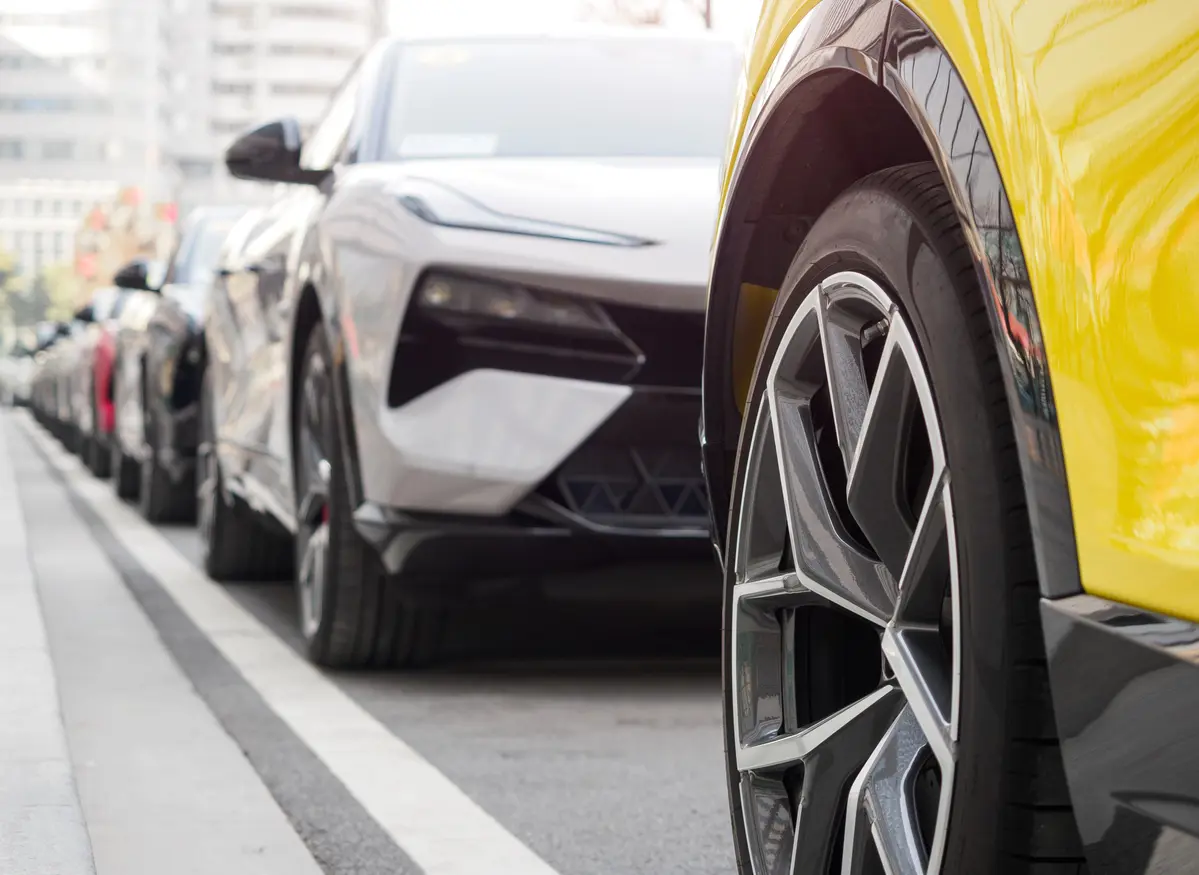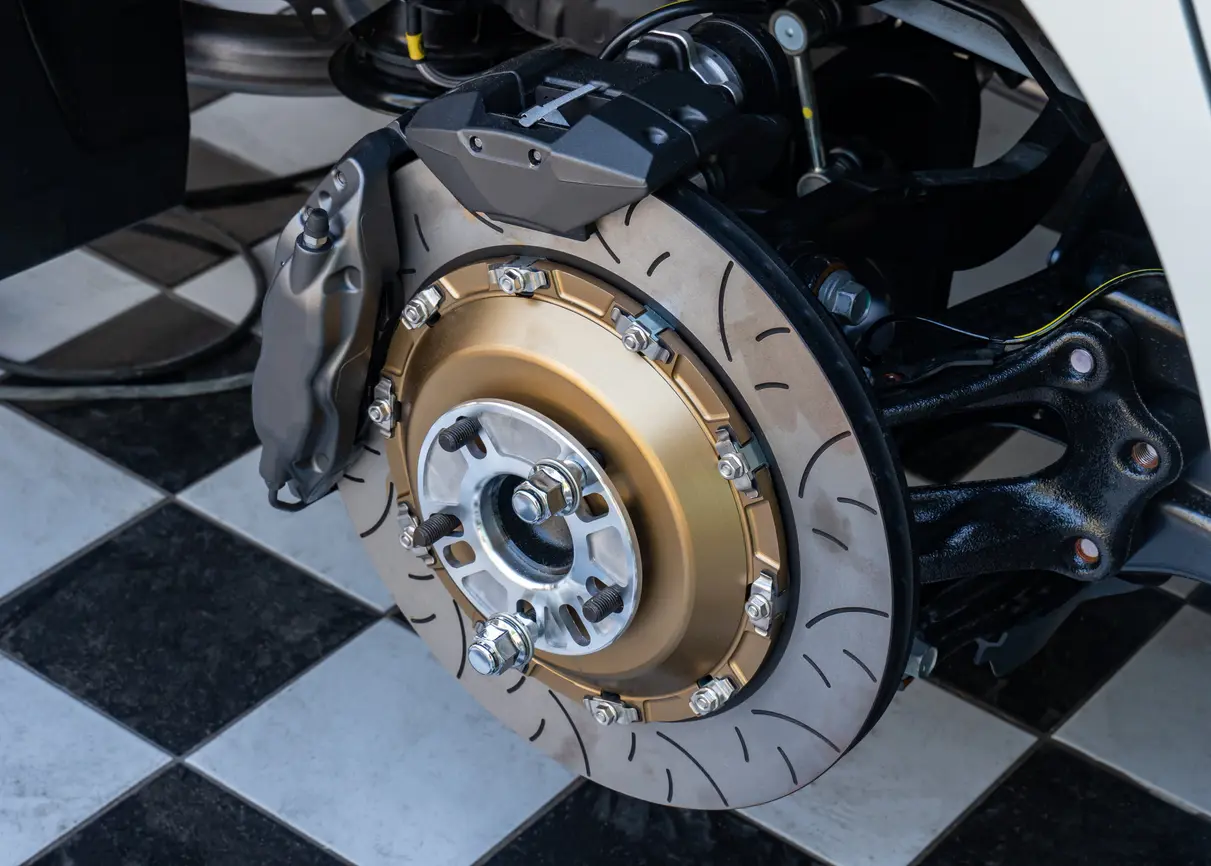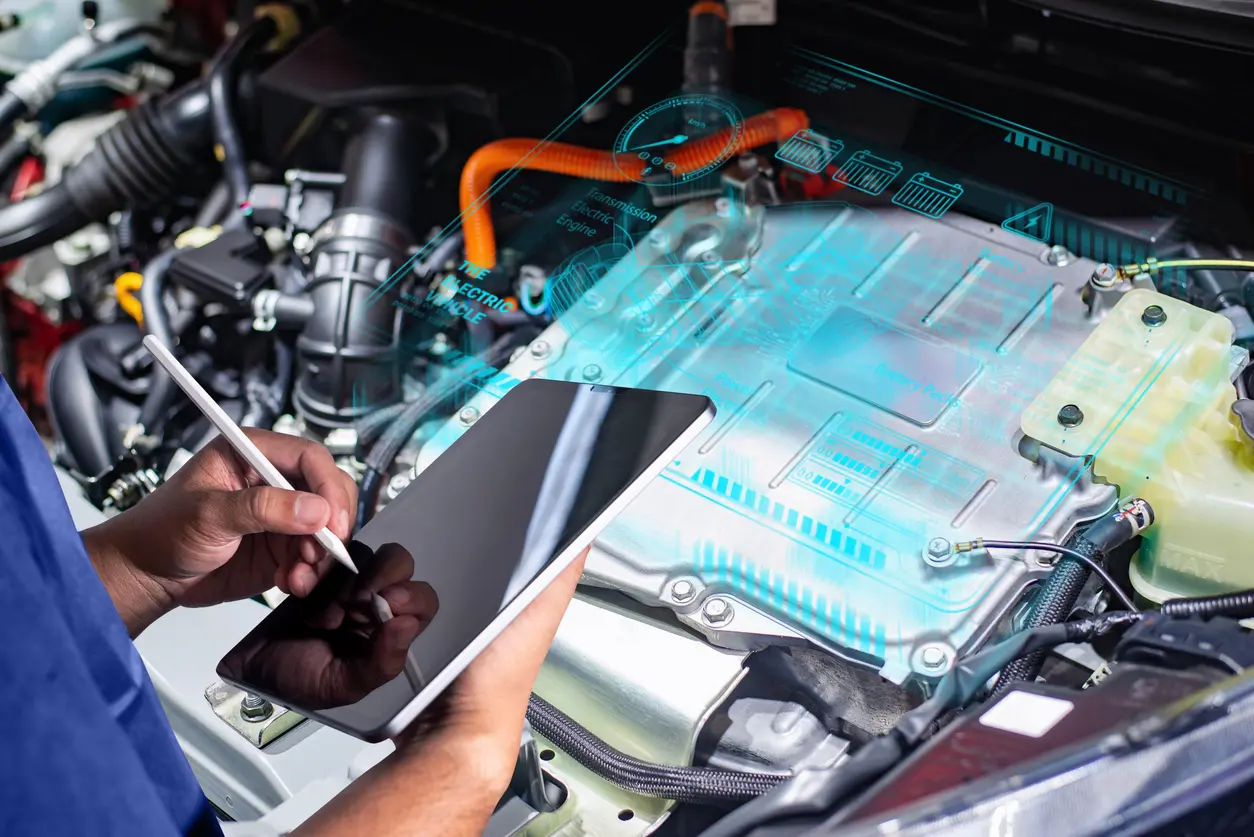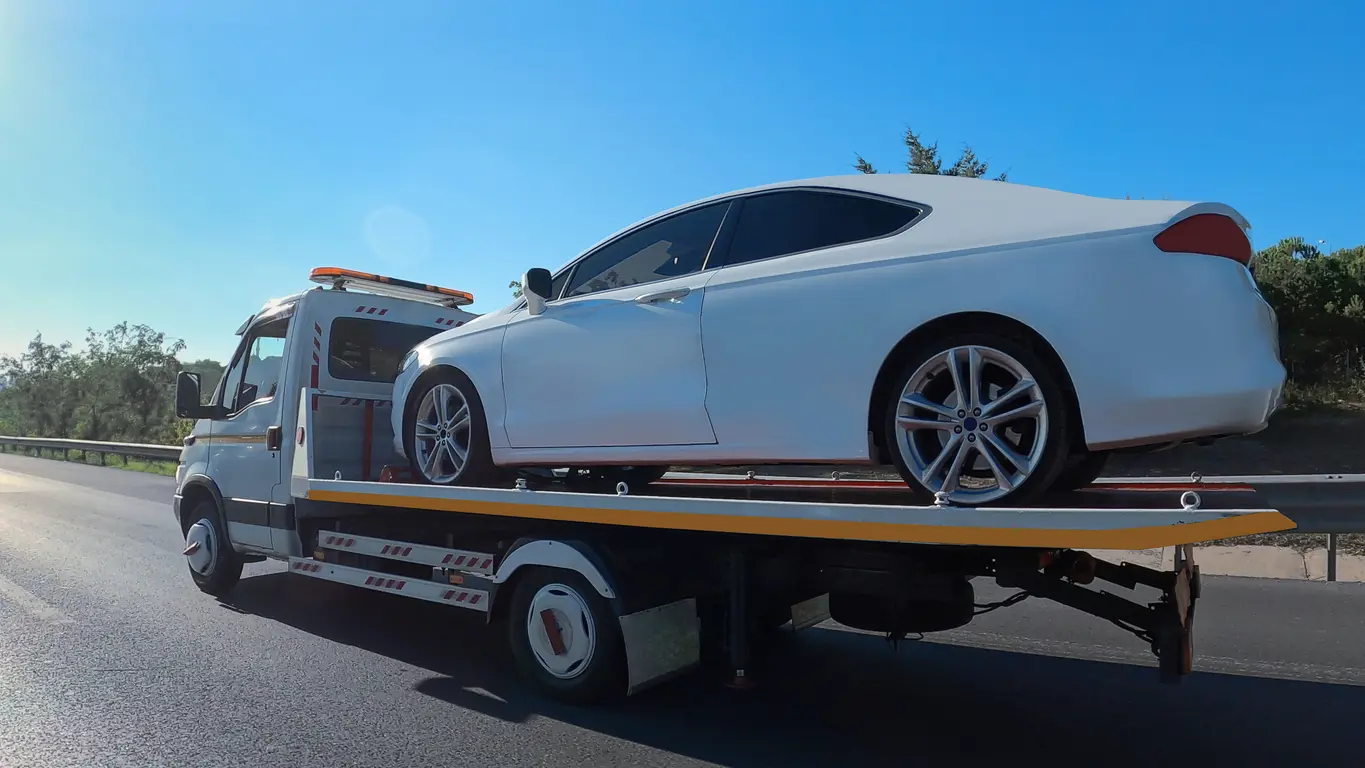Can you tow an electric car?
Not with a hook. Unlike gas-powered vehicles, most EVs can’t fully disengage their drivetrain. The absence of a neutral gear shift means freewheeling isn’t an option.
Spinning the tires on your EV can lead to an unintentional power surge in the vehicle. Because the generated electricity has nowhere to go, you may end up creating a feedback loop that damages your vehicle’s internal systems.
How to prepare your EV for towing
There are several steps to preparing an electric vehicle for towing. Following the right procedure is essential for ensuring safety and protecting your investment.
Power down
To reduce the risk of short circuits or component wear during movement, power down your EV: turn off the ignition and confirm that the vehicle is no longer in drive mode.
Look for a tow or neutral setting
Most EVs have a tow mode or neutral setting. Activate tow mode to prevent unnecessary strain on the vehicle.
Refer to your owner’s manual for vehicle-specific information. Most manuals include detailed instructions on the procedures and precautions for your vehicle. This includes specific information on warranty concerns as well, as most state that towing a car improperly can void the warranty in cases of avoidable damage.
Get to a safe location
Choosing the correct towing method
When it comes to EVs, not all towing methods are created equal. There are three main towing methods: flatbed towing, dolly towing, and wheel-lift towing. Flatbed towing is generally the safest choice.
Correct towing method
Flatbed towing is the safest and most recommended method for EVs. Flatbed towing involves lifting the entire vehicle onto a flat surface for transport. By keeping the wheels elevated, flatbed towing helps to avoid issues caused by wheels rolling or spinning on the ground.
Incorrect towing methods
Dolly towing and wheel-lift towing only work in the case of front-wheel-drive EVs when the front wheels (the drive wheels) are lifted off the ground. Even in this case, always consult the owner’s manual to confirm that dolly towing is permitted for your specific EV model.
Dolly towing lifts the front or rear wheels off the ground using a dolly and is generally not recommended for EVs due to drivetrain engagement.
Wheel-lift towing also involves lifting the front or rear wheels, but with a hydraulic or mechanical lift.
In both cases, the free-spinning wheels are a huge risk to your vehicle and should not be used with EVs.
How much does towing an EV cost?
The cost of towing an EV depends on several factors, including location, distance, and time of day. Because EVs require flatbed towing, they are generally more expensive to tow.
Location plays a key role in towing costs. In urban areas, cost is typically influenced by demand and traffic. Conversely, rural areas often charge extra for the distance the tow truck must travel to reach you. You may also be charged more for a tow during off-peak hours or for after-hour services.
Towing services for your EV
Tesla
Tesla offers emergency roadside assistance as a part of its service package. The program covers certain incidents and ensures that Tesla vehicle owners receive specialized roadside care.
For eligible incidents, Tesla covers the cost of towing to the nearest service centre, or to a location within a specified distance (typically 80 kilometres). They also offer the option of transporting the vehicle to the nearest charging station in the case of battery depletion, as well as flat tire support. Because the service is available 24/7, costs are often more transparent.
CAA
CAA towing services are also available 24/7. The organization prioritizes flatbed towing for EVs and trains all CAA providers on EV towing, ensuring your vehicle will be properly prepped, loaded, and transported.
Learn more
If you want to read up on how to tow with your EV, we have the perfect article for you here.
To better understand the towing requirements of your specific EV, drop by your nearest NexDrive service centre. Our EV-trained technicians will be more than happy to answer your questions.

Why do electric car tires wear out so fast?
EV tires experience increased tread wear because of instant torque and unsprung weight. Learn why electric vehicles lead to worn-out tires and how to extend the lifespan of EV tires with proper maintenance.

Why regenerative braking is bad for your brake pads
Regenerative braking improves energy efficiency, but can cause brake pad issues because of reduced mechanical brake use. Learn how to maintain your brake system and prevent costly repairs in this article.

Does an EV need regular general maintenance?
Although EVs require less maintenance than gas-powered vehicles, they still need regular care. Learn about battery health, brake maintenance, and more here.
